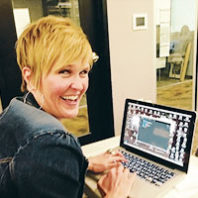
Hanging a left at wine
The allure of winemaking has attracted a menagerie of professionals to the business. Washington State University’s Viticulture and Enology Program has lured aerospace engineers, Army medics, apparel designers, scientists, and many others to the field. Here, we bring you a few of the stories of those who have changed careers by hanging a left at wine.
After years of dissecting rat brains, Berenice Burdet had had enough.
The Argentinian neuroscientist was untangling stress’s web of physiological effects on the hippocampus. The stress we feel in a crammed subway train, Burdet says, affects our behavior by dampening affect. We become depressed, and activity levels decline. … » More …







